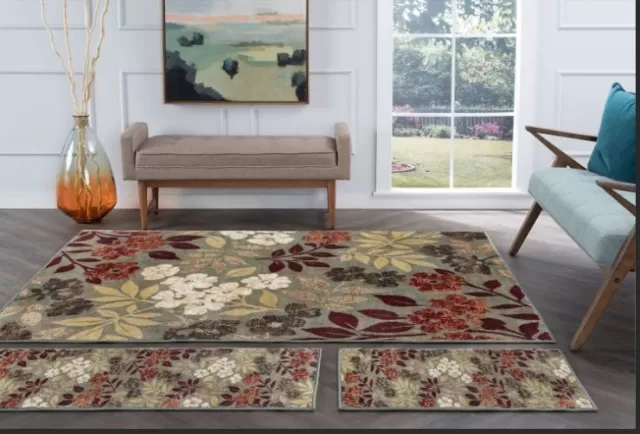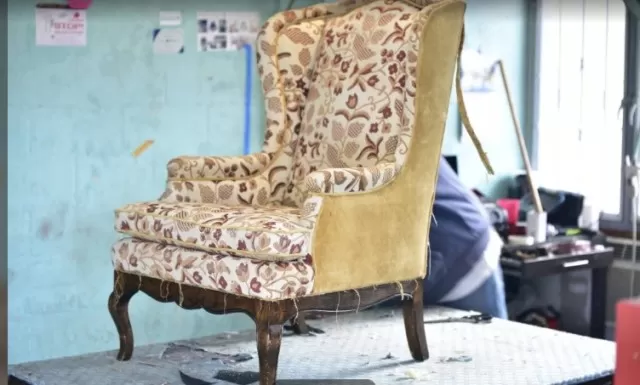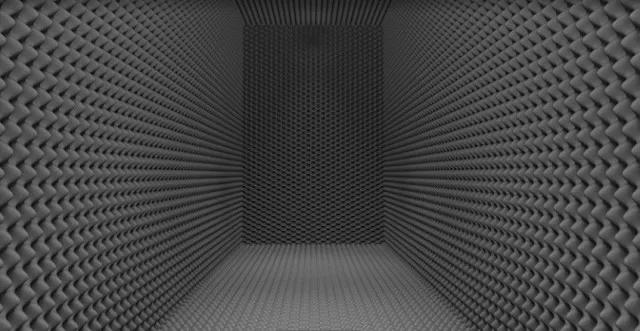Soundproofing Your Home Office: 10 helpful tips (Part 2).Absolutely, creating a peaceful and distraction-free home office environment is crucial for productivity. Implementing these soundproofing measures can significantly enhance your home office environment, allowing you to focus and work more effectively in peace and quiet.
Enhance Acoustic Comfort with Rugs: Your Solution for Peaceful Productivity

In rooms featuring hard flooring like tile or laminate, sound waves tend to bounce around, creating a less-than-ideal acoustic environment.
However, you don’t need to embark on a major renovation project like installing wall-to-wall carpeting to enjoy some much-needed sound relief. The solution is simple: just add rugs.
One or more carefully chosen area or throw rugs can work wonders in transforming the acoustics of your space.
Opt for thicker and softer rugs, as they excel at absorbing harsh noises and preventing the resounding effect that can disrupt your concentration. With these rugs in place, you can work or relax in a more peaceful atmosphere, free from the distractions of echoing sound waves.
It’s a practical and aesthetically pleasing way to create a quieter, more productive environment in your home or workspace.
Enhance Your Home Office Acoustics with Soft Wall Hangings
When it comes to minimizing noise transfer in your home office, you can take a cue from insulation by employing an innovative and stylish solution: soft Wall Hangings.
Hanging a quilt or an ornamental rug on the wall not only adds a touch of decor but also effectively reduces sound transfer from the adjoining room.
The effectiveness of these wall hangings is directly related to their thickness, with thicker items offering superior sound-absorbing capabilities.
Get creative with your choices; even something as snug as a baby blanket or a crib comforter can make a significant difference in curbing unwanted noise.
By strategically placing these soft wall hangings, you’ll create a more tranquil and focused atmosphere in your home office, allowing you to work or concentrate without distractions from sounds in neighboring spaces.
It’s an ingenious way to combine aesthetics and functionality, making your workspace not only visually appealing but acoustically optimized as well.
Elevate Comfort and Quiet in Your Workspace with Upholstered Furniture

For a home office that prioritizes both comfort and noise reduction, consider making a change in your seating and furniture choices.
Swap out those hard wooden chairs for a padded desk chair, and if space allows, introduce an overstuffed chair or loveseat. These upholstered pieces not only enhance comfort but also play a significant role in minimizing irritating noises.
As an added touch, dress up your office furniture with a couple of soft pillows.
Not only do they enhance the overall aesthetics of your workspace, but they also contribute to sound absorption. The combination of padded furniture and soft pillows creates a serene and peaceful environment, allowing you to focus on your tasks without being bothered by intrusive sounds.
By embracing the idea of upholstery and soft furnishings, you’ll create a home office that not only feels inviting and cozy but also serves as an oasis of tranquility where productivity can thrive.
Achieving Peaceful Productivity: Noise-Proofing the Ceiling of Your Home Office
For those whose home office is nestled in a basement, the issue of sound transfer from above can be a significant challenge.
To address this concern and achieve lasting noise reduction, a thoughtful approach to the ceiling can make all the difference. Consider the following steps:.
Install a Drop Ceiling: Begin by installing a drop ceiling in your basement home office.
A drop ceiling consists of suspended panels that can be easily positioned below the existing ceiling. This creates a gap between the old ceiling and the new dropped panels, serving as an effective barrier against sound transmission.
High-Density Insulation: Fill the space between the old ceiling and the new dropped panels with high-density insulation material.
This insulation acts as a sound-absorbing buffer, reducing the transmission of sound from the upper floors into your home office. Opt for quality insulation that offers excellent acoustic properties.
Seal Gaps and Edges: Ensure that all gaps, edges, and seams are properly sealed to prevent sound leakage.
This step is crucial in maximizing the effectiveness of the drop ceiling and insulation in containing noise.
By implementing these measures, you’ll create an office environment where unwanted sounds from overhead are significantly reduced, allowing you to work with focus and concentration.
This investment in acoustic comfort can greatly enhance your productivity and overall well-being in your basement home office.
Enhance Your Workspace Tranquility: Soundproofing Windows for a Quieter Office

Dealing with street noise infiltrating your home office through an older, single-pane window can be a real productivity hindrance.
If your budget allows, consider the following steps to create a quieter and more peaceful workspace:.
Upgrade to Double- or Triple-Pane Windows: Replacing your old single-pane window with a modern double- or triple-pane unit can make a substantial difference in noise reduction.
These newer windows are designed with multiple layers of glass that act as effective sound barriers.
Thick Draperies: Hang thick, heavy draperies over the window to provide an additional layer of sound insulation.
These curtains can help absorb sound and block outside noise from entering your office. Opt for curtains with dense fabric or consider using blackout curtains for maximum effect.
Interior Window Shutters: Installing interior window shutters is another effective soundproofing option.
These shutters create a physical barrier that can block sound from penetrating the room. Choose shutters designed for noise reduction and make sure they fit snugly within the window frame.
Weatherstripping: Ensure that the window frame and any gaps around it are properly sealed with weatherstripping.
This helps to eliminate any potential points of sound infiltration.
By addressing the noise issue at the source, your office with a window overlooking a bustling street can become a serene and focused workspace.
These soundproofing solutions not only enhance your productivity but also contribute to your overall comfort and well-being.
*The information is for reference only.